
Influncer_Marketing_2020_watermark
.pdf
vk.com/id446425943
It is notable that just 1% of respondents rank protecting their social responsibility towards a younger audience as their greatest concern. The impact social media can have upon mental health has been well documented over the past couple of years, and it is critical that brands understand their responsibility in this area, and particularly with the younger generation. “Young people are creating their own content now on social media which is gritty and unedited, and that is the stuff that is really resonating with them,” explains Bexy Cameron, Head of Insight at Amplify. “It doesn’t take a lot to start to win with young people; they just want realistic stuff.”
In the fashion and beauty sector, where brand and influencer content very often present a flawless version of reality, this can be far from what the average teenager looks like or is experiencing.
“Brands are very aware of what they are doing, but they still want to sell the dream,” says Marianne
Fakinos, Senior Influencer and Partnership Manager at TMW Unlimited. “In the beauty sector especially, there is little interest in diversity currently. This is slowly beginning to change, but it is our job to push it forward, and it will take time.”
Many of the experts interviewed for the report claim that we are slowly seeing a new wave of influencers, who for want of a better phrase, are focused on ‘keeping it real’. Lucy Lendrem, Head of Talent UK at Gleam Futures, says: “Instagram Stories has meant that even if you are producing overly aspirational content on your grid, you are able to show a little bit of the behind the scenes reality there. Brands and influencers have a responsibility to do that more and more. People want real, or they will disengage.”
For example, US discount retailer Target’s most recent swimwear campaign avoids any airbrushing or reshaping of the models, and the pool of talent used is incredibly diverse, focused on portraying women’s bodies as they really are. Designers Rebecca Minkoff and Diane von Furstenburg are also eliminating professional models altogether in favour of “real” women, according to Glamour.11
Investment in influencer marketing remains cautious
Despite the soaring costs of influencers, 53% of marketers have less than 10% of their marketing budget to spend on influencers (see Fig. 16 below), indicating an ongoing lack of confidence or buy-in from the c-suite.
Some of the experts interviewed for this report claimed that brands are often restricted by campaign-specific budgets, which makes it difficult for them to secure longer-term budget allocation.
“Brands are often looking at campaigns in isolation and have budgets signed off for just that particular activation, and budgets can also fluctuate greatly from campaign to campaign,” shares Natasha
Mensah Benjamin, managing partner at Beyond Talent. A talent and influencer procurement agency. “It is still difficult for brands to commit upfront to 12-month budget, for example, and they also want to see how well the first piece of activity is received. This means that they are missing out on opportunities for economies of scale, currently.”
Figure 16
How much of your marketing communication budget is currently spent on influencer marketing?
53%
27%
13% |
|
|
5% |
1% |
|
|
1% |
|
|
|
Less |
10% |
20% |
30% |
50% |
75% |
|||||
than |
||||||||||
10% |
|
|
|
|
|
|
|
|
|
|
20% |
30% |
50% |
75% |
100% |
||||||
31
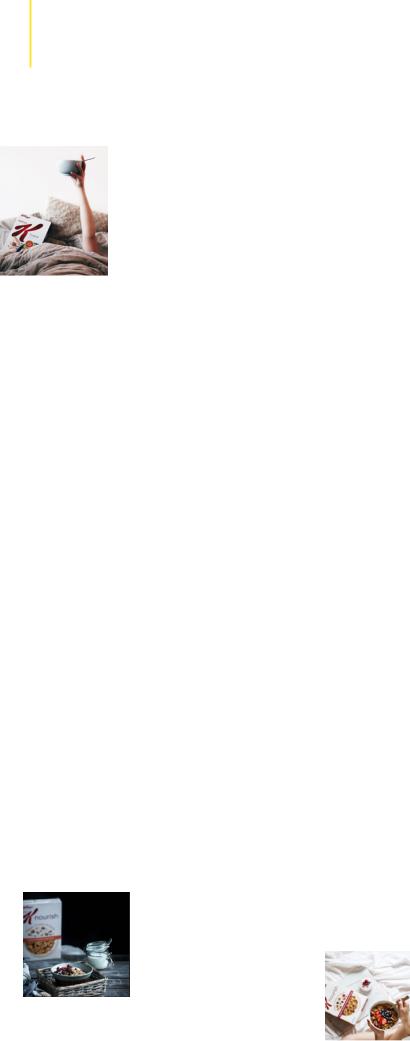
vk.com/id446425943 |
|
E UD Y |
KELLOGG’S: |
AS ST |
JUSTIFYING |
C |
INVESTMENT |
|
|
WHEN THERE
IS NO DIRECT
LINK TO
PURCHASE
CHA LLENGE
Breakfast cereal brand Kellogg’s had been experimenting on a small scale with influencer marketing for its Special K brand, but the brand faced a critical challenge.
Joseph Harper, Social Media Manager, UK & Ireland, Kellogg’s explains: “in the online environment, we have no direct link to purchase available. Most of our sales are still done through bricks and mortar stores and we therefore don’t have a quantitative way to measure the effectiveness of our influencer collaborations.” in relation to ROI and sales. “All we can rely on are vanity metrics, and this makes it difficult for me to secure further investment for influencer marketing particularly.”
Beyond this, Kellogg’s faced a further issue. Historically, Special K had been positioned as a ‘diet’ brand targeted at women for shape management and weight loss. It was one of the most successful FMCG brands of its era, running popular advertising campaigns such as ‘Drop a jean size’ and ‘The Special K diet’, which had helped to drive sales and awareness around the world. But as times had changed, the story had become out-dated, but the legacy of the campaign had stayed with the consumer. The challenge was to create new narratives for the Special K brand which were more aligned with positive nutrition, its vitamin and minerals contents, and the nutrients women can get from our products on a daily basis,”
Harper explains.
Kellogg’s had struggled to shift the dial on sentiment through its own content and so it was optimistic that influencer content might have greater impact. “We wanted to leverage the credibility of influencers, tap into their advocacy and generate assets and content that we could then use as our own,” says Harper.
32
SOLU
TION
For its #PoweringYou campaign, Kellogg’s partnered with influencer marketing platform Takumi to help it select relevant female lifestyle influencers to partner with. “We knew its talent demographic fitted well with our brand and target consumer, that being females aged 18-30,” says Harper. Six mid-tier influencers were chosen, supported by 135 micro-influencers, focusing on a wide range of interests including fashion, art, beauty, travel, food, sports & fitness and parenting. The content needed to speak about the food, since an important objective of the campaign was to drive some purchase intent. But Kellogg’s wanted to give its influencers as much creative freedom as possible: a tall order for such a large FMCG brand, with stringent nutritional guidelines to comply with. “We know the less prescriptive our briefs are the more likely we are to get great content from our influencers but letting go of creative control is still the biggest sticking point for us,” admits Harper.
It was agreed that the #PoweringYou campaign would focus on communicating the wide variety of nutrients and benefits that make up Special K, and influencers would have the freedom to choose those that were most relevant to them. For example, one influencer was heavily into kickboxing and focused on the nutritional benefits of Special K that would fuel their hobby. “We allowed the influencers to remove any visual reference to our product as we understand their hobbies and what feeds their motivation doesn’t necessarily revolve around the breakfast table,” Harper shares.
The influencer content compliance and approval process proved a massive piece of work for Harper.
“It is the thing we discuss the most and which causes the most inertia, workload and workflow issues internally,” he admits. Kellogg’s has a strict and rigorous internal approval process: content must first be checked by its nutrition team who ensure all nutritional claims are substantiated and the correct language used, for example, the brand can’t show an image of a bowl of cereal unless it is of the portion size indicated on the side of the pack.
“It has been a long piece of work for me to bring the approvals team to a point where they are happy with how much visibility they have on an influencer’s work before it goes live. With the #PoweringYou campaign, the second images went live, there was a live checking process to ensure the assets were complaint, so that if there was a major red flag it could be taken straight down,” says Harper. “There is a huge focus on FMCG companies to be compliant with industry guidelines and if we make a mistake we will get caught out.”
RES ULTS
The influencer campaigns proved highly successful, promoting the nutritional benefits of Special K while reminding people that it is still a delicious food. In total, 171 pieces of content reached a total of over 4.7m users, with an average engagement rate of 2.6% - much higher than the brand would usually achieve on its own channels. Net positivity for the period also reached 44% on Instagram, in part due to the nature of Instagram and the fact that the channel drives significantly more positive conversation than other social networks.
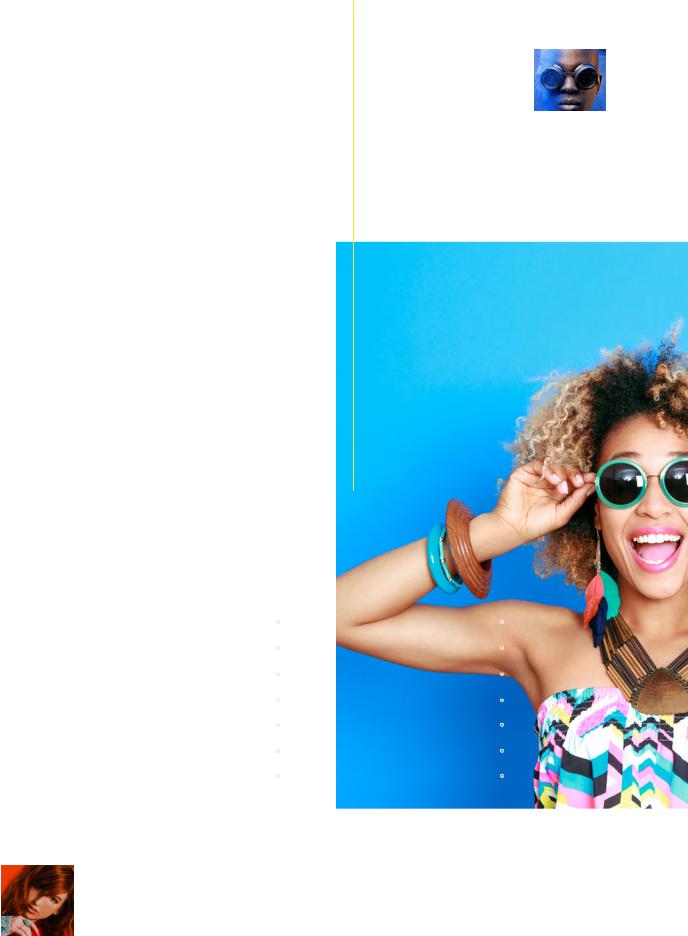
vk.com/id446425943
MEASURING
SUCCESS
Engagement is the number one benchmark for success
When it comes to measuring the impact of influencer marketing, 85% of marketers say engagement data, such as comments and content shares, is the biggest metric of success for influencer marketing (see Fig. 17 below). What was once an industry that measured its success according to big follower numbers and volume of ‘likes’, has matured significantly to focus on how audiences are reacting to and interacting with influencer content.
Suri Singh, Influencer Expert at ITB Worldwide, shares: “three years ago, measuring engagement was never part of our remit, but as this space has evolved and as more and more people have come to understand that it isn’t all about having a million followers, it naturally has become part of our remit. Engagement is now a key metric that everyone is looking for.”
Figure 17
What data do you use to measure the success of your influencer marketing programme?
Engagement data e.g. comments and content shares |
|
|
|
|
|
|
|
|
85% |
|
|
|
|
|
|
|
|
|
|||
|
|
|
|
|
|
|
|
|||
Social media traffic |
|
|
|
|
|
|
|
59% |
||
|
|
|
|
|
|
|
|
|||
|
|
|
|
|
|
|
||||
Revenue generation |
|
|
|
|
|
|
|
|
|
45% |
|
|
|
|
|
|
|
|
|
||
Web analytics data, including floodlight tags |
|
|
|
|
|
|
40% |
|||
|
|
|
|
|
|
|
|
|
||
Campaign analytics data, provided by the influencer |
|
|
|
|
|
33% |
||||
|
|
|
|
|
|
|
|
|
||
|
|
|
|
|
||||||
Lead referrals |
|
|
|
|
31% |
|||||
|
|
|
|
|
|
|
|
|
||
Sentiment data |
|
|
|
26% |
||||||
|
|
|
|
|
|
|
|
|
||
|
|
|
||||||||
33
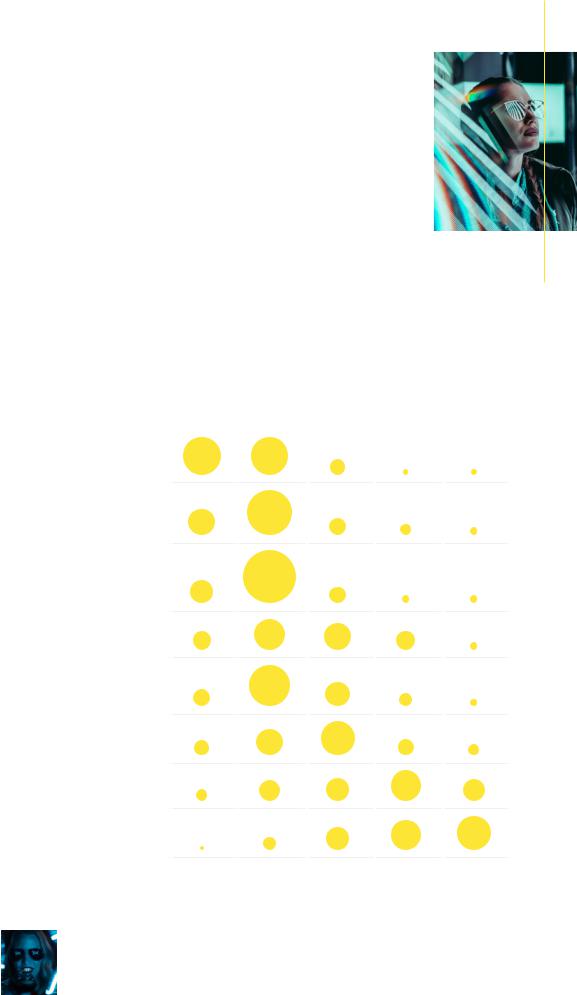
vk.com/id446425943
Brands are also seeing success with engagement, with 79% of respondents agreeing that influencers have helped to boost their brand’s engagement and interaction with consumers (see Fig. 18 below). Within the consumer survey, 87% of respondents
“strongly agreed” or “somewhat agreed” that they are happy to engage with influencers whose interests, passions and skills match their own.
The finding demonstrates further the importance of brands working with influencers who are a natural and relevant match for them, and their target audience.
Above all, it seems influencers are helping brands to build awareness, around the brand or specific products; a view that’s supported by 86% of industry respondents. The consumer view supports this, with 62% of respondents agreeing that being introduced to new and/or independent brands is the primary way in which they are influenced by talentled content and collaborations.
Figure 18
How have influencers supported your marketing strategy over the past
12 months?
Influencers have helped build brand awareness of a product launch/campaign
Influencers have increased consumer engagement
43% |
43% |
10% |
2% |
2% |
32% |
47% |
13% |
5% |
3% |
They’ve made marketing messages more relatable
Influencers and their audiences provide valuable feedback to help us improve product/service
Influencers have helped restore a level of trust among our customers
They have increased revenue generation
They’ve not yet had an impact on our marketing strategy
Influencers have had negative impact on our brand reputation
28% |
52% |
12% |
5% |
3% |
15% |
36% |
28% |
18% |
3% |
13% |
47% |
30% |
7% |
3% |
12% |
33% |
40% |
11% |
4% |
5% |
19% |
22% |
34% |
20% |
1% |
7% |
22% |
33% |
37% |
Strongly |
Somewhat |
Neither agree |
Somewhat |
Strongly |
agree |
agree |
or disagree |
disagree |
disagree |
34
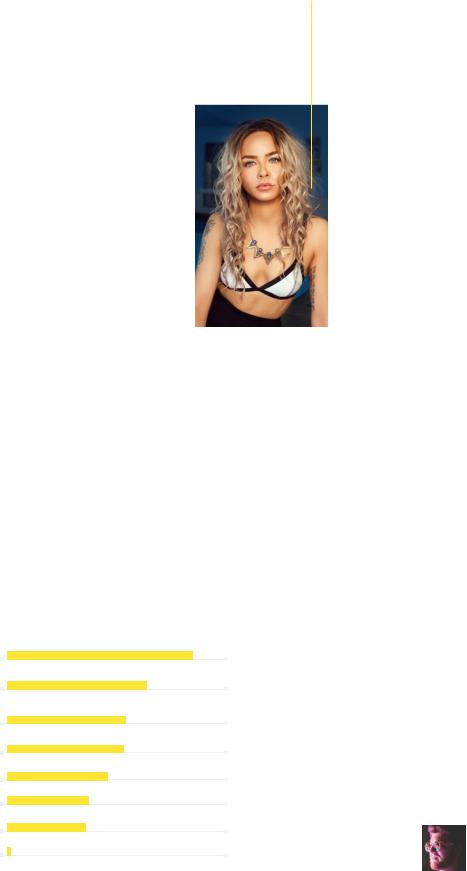
vk.com/id446425943
Overall, it seems brands are becoming better educated in the ways available to them to measure the success of their influencer collaborations, and the expert interviews carried out for this report reveal that many are now having the confidence to request analytics from the influencer directly. For example, Suri Singh, Influencer Expert at ITB Worldwide shares: “within Instagram stories we look specifically at the post reach and we request screenshots from our influencers of their profile, which we can then verify, to give us a depth of engagement-based analytics for that individual.”
There are a myriad of metrics and tools that brands can be using to track the impact and performance of their influencer-led activity, and Fig. 19 below shows that brands are becoming more sophisticated in their measurement approaches. Campaign hashtags, for example, are how extremely prevalent within digital marketing and 61% of industry respondents say they are using these to assess the impact of their influencer investments. Almost half (46%) say they are using trackable attribution links, enabling them to see how an individual is performing for them. Trackable shopping links, such as those within Instagram, are also being utilised by 40%.
Above all, it is critical that brands are measuring what is important, tracking results that relate directly to the campaign objectives. “The beauty of influencer marketing is that it is very trackable and measurable,” says Natasha Mensah Benjamin, managing partner at Beyond Talent. “As long as you have access to backend analytics and engagement rates, you can easily set KPIs and measurable goals at the outset of a project. It is then possible to determine if an influencer’s price tag is justified based on what the brand thinks they can achieve through them, or maybe the marketing budget would be better spent elsewhere.”
Figure 19
What tools / methods do you use to track performance on influencer-led campaigns?
Campaign hashtags
Trackable attribution/affiliate links within content created by the influencer
Platform-specific metrics e.g. trackable shopping links in instagram
Influencer linked URLs
A branded landing page
Search Engine Optimisation
Use of discount codes
Other
61%
46%
40%
39%
34%
28%
27%
3%
35

vk.com/id446425943
Only 18% are including influencer marketing within their overall digital marketing ROI calculations
A resounding 84% of marketers agree that being able to demonstrate the ROI of influencer marketing will be critical to its future (see Fig. 23 below). Yet despite this, 31% say influencer marketing is peripheral to their digital marketing ROI calculations, and a further 21% say it is too much of a challenge to include influencer marketing within their overall ROI measurements. Only 18% of respondents claims influencer marketing is an intrinsic part of their overall digital marketing ROI calculations. This is surprising considering the array of data marketers say they are collecting, as shown in Fig. 19 above. As Lucy Lendrem, Head of Talent UK at Gleam Futures, asserts: “ROI is the biggest question facing the influencer industry right now.”
One of the potential reasons for this is that influencer marketing is often measured by ‘softer metrics’ such as engagement and sentiment, and how these relate to conversions and revenue can sometimes be tricky to quantify. Furthermore, the impact of influencer marketing isn’t always instant and can sometimes prove a lengthy sales cycle. For instance, within the consumer survey, 55% of respondents said influencers most commonly
“inspire them with a new look or style”, and 50% said they encourage them to add a product to their wish list for potential purchase in the future, while only 28% say influencers encourage them to immediately clickthrough and buy something.
One of the pitfalls of marketing ROI is that it is easy to focus on incremental profits in short-term sales and underestimate the long-term benefits that marketing brings to brand equity and customer relationships over time. Experts interviewed for the report also cited the lack of industry benchmarks available currently for influencer marketing ROI.
Natasha Mensah Benjamin, managing partner at Beyond Talent, says: “It is important to ensure that every factor of the campaign is optimised, from timing to content and analytics, so that we can quantify the ROI potential, and continually refine the campaign along the way.” It is also critical that there are no gaps in data, and increasingly social media platforms themselves are supporting brands with this. For example, the Instagram paid partnerships feature has the potential to give brands a lot more transparency on the effectiveness of individual influencers.
Figure 20
How does influencer marketing fit within your overall digital marketing ROI calculations?
Influencer marketing is |
|
|
|
31% |
|
peripheral to our digital |
|
|
|
|
|
|
|
|
|
||
marketing ROI calculations |
|
|
|
|
|
It is too much of a challenge to |
|
|
|
21% |
|
include influencer marketing |
|
|
|
||
|
|
|
|
||
within our overall ROI |
|
|
|
|
|
Influencer marketing is an |
|
|
|
18% |
|
intrinsic part of our digital |
|
|
|
|
|
|
|
|
|
||
marketing ROI calculations |
|
|
||
Influencer marketing |
|
|
||
metrics are used as more of |
|
|
|
17% |
|
|
|
||
|
|
|
|
|
a pulse on how our digital |
|
|||
|
|
|||
marketing is performing |
|
|
||
We have no immediate |
|
|
||
plans to include influencer |
|
|
|
12% |
marketing within our digital |
|
|
|
|
|
|
|
|
|
marketing ROI calculations |
|
|
||
There is little doubt that influencer marketing budgets need to rise and become more flexible, and as Fig. 21 below reveals, 51% of industry respondents say they are regularly reviewing their investments already and adjusting accordingly.
Figure 21
How do your influencer marketing ROI calculations impact your future strategy and planning, if at all?
We review regularly, and |
|
|
|
|
|
|
|
|
adjust our investment |
|
|
|
|
|
|
25% |
|
|
|
|
|
|
|
|||
in individual influencers |
|
|
|
|
|
|
||
|
|
|
|
|
|
|
|
|
accordingly |
|
|
|
|
|
|
|
|
We review regularly, |
|
|
|
|
|
|
|
|
and adjust our investment |
|
|
|
|
|
|
26% |
|
in specific social channels |
|
|
|
|
|
|||
|
|
|
|
|
||||
|
|
|
|
|
|
|
|
|
accordingly |
|
|
|
|
|
|
|
|
Our ROI calculations |
|
|
|
|
|
|
|
|
are used to decide our |
|
|
|
|
|
|
|
14% |
annual budget cycle for |
|
|
|
|
||||
|
|
|
|
|||||
|
|
|
|
|
|
|
|
|
influencer marketing |
|
|
|
|
|
|
|
|
No action is taken with this |
|
|
|
|
|
|
|
35% |
information, currently |
|
|
|
|||||
|
|
|
||||||
|
|
|
|
|
|
|
|
|
36
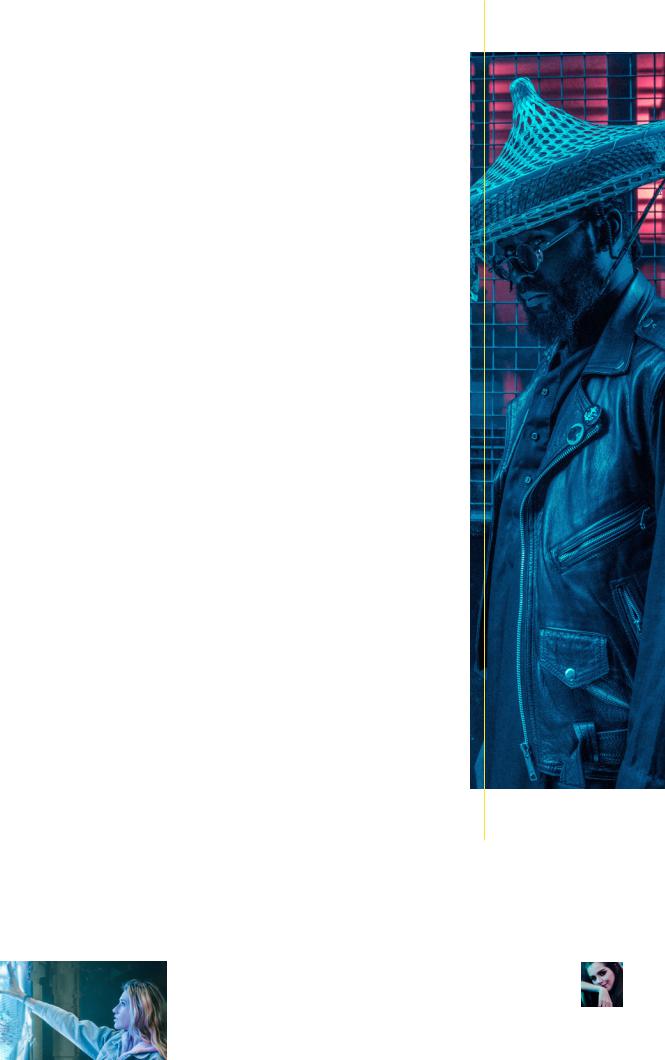
vk.com/id446425943WHERE
DOES THE
INDUSTRY
NEED TO
BE IN 2020?
Authenticity must prevail, and we will see a rise in influencers who are ‘keeping it real’
A common theme throughout both the industry and consumer survey findings, is that authenticity must prevail for the influencer marketing industry to survive. As Fig. 22 below reveals, 83% of industry marketers say they need better data and metrics on influencers to allow for greater transparency and authenticity, and Fig. 23 confirms that brands and influencers alike need to be taking authenticity more serious for it to be sustainable long term.
Bexy Cameron, Head of Insight at Amplify, argues: “Brands should be the champions of authenticity. If they are brave and start to portray people realistically, especially in the UK where we have a progressive-thinking set of young people, it will really pay dividends.”
However, influencers must strive for authenticity too, or their audiences will ‘switch off’, and they will lose the opportunity for future commercial deals.
“There’s a new wave of influencers that need to come through, particularly with the links that have been drawn between social media and mental health,” argues Sarah Evans, Head of Digital at Bottle PR. “The next stage of influencer marketing needs to be responsible, giving consumers more substance and more thoughtful collaborations, which truly add value to them.”
Over the next couple of years, we are also likely to see brands make better use of genuine advocates such as employees and customers who have natural credibility and micro influence which can be broadened with scale.
37

vk.com/id446425943
Figure 22
What are the top 3 trends that will dominate influencer marketing strategies for you for the next two years?
Better data and metrics to allow for more transparency and authenticity |
|
|
|
|
|
|
|
|
83% |
|
|
|
|
|
|
|
|
||
|
|
|
|
|
|
|
|
||
A more aligned approach to measure distinct to each individual campaign |
|
|
|
|
|
|
|
67% |
|
|
|
|
|
|
|
|
|
||
|
|
|
|
|
|
|
|||
Influencer marketing campaign using mobile video & AR |
|
|
|
|
|
|
44% |
||
|
|
|
|
|
|
|
|
||
|
|
|
|
|
|
||||
AI powered conversation & personalisation campaigns across email, social |
|
|
|
|
|
27% |
|||
|
|
|
|
|
|
|
|
||
|
|
|
|
|
|||||
Integration of influencers into in-house marketing teams |
|
|
|
|
22% |
||||
|
|
|
|
|
|
|
|
||
|
|
|
|
||||||
Utilising dark social for influencer-led communication |
|
|
|
13% |
|||||
|
|
|
|
|
|
|
|
||
|
|
|
|||||||
Human influence may be challenged by that which is digitally created
Earlier this year, digital ‘supermodel’ Shudu made her Instagram debut, taking the fashion world by storm. In her first post she posed nude with a stack of gold chokers around her neck, and soon after she caught the eye of the beauty world when Rihanna’s Fenty Beauty line reposted an image of her with striking tangerine lips. amassing thousands of followers, and people believed she was real…except she wasn’t. Instead she was one of the world’s first computer generated influencers: an art project, and the work of a young British photographer named CameronJames Wilson.
As Fig. 22 above shows, just over a quarter of respondents believe artificial intelligence will have found its way into influencer marketing by 2020. It is a trend that seems inevitable, and there has been a big debate around whether it matters that Shudu is computer generated. Sarah Evans, Head of Digital at Bottle PR, expresses her concerns: “Shudu is flawless and this is fuelling the fire, perpetuating this unattainable, digitally enhanced beauty standard, in a similar way to Snapchat filters. It makes it even more important for transparency to prevail. If people are looking at models like Shudu, regardless of whether they know she’s real or not, it could still fuel body image anxiety. Everyone knew Barbie wasn’t real, after all. We need to tread the line very carefully between what we could do and what we should do.”
38
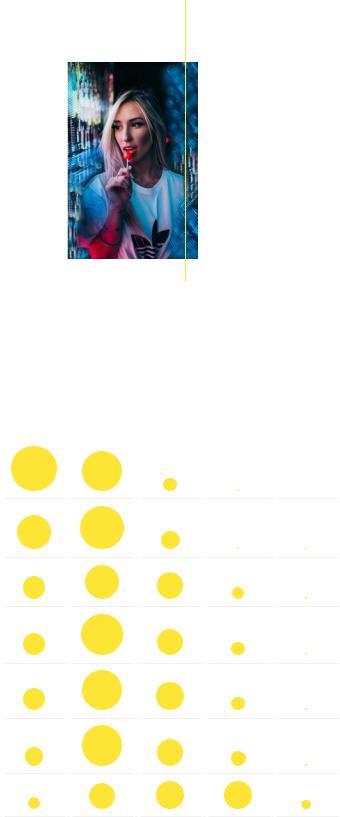
vk.com/id446425943
The cost of working with influencers will level out and budgets will rise
Over the past couple of years, the cost of influencer marketing has risen exponentially, and to some extent influencers have been at liberty to charge whatever they like which brands have paid on trust and sometimes naivety. But as Figure 23 below shows, 58% of industry marketers believe that by 2020 influencer marketing will be entirely data-driven, and with this depth of analytics and information marketers will be more easily able to assess what an influencer is worth. Experts interviewed for the report spoke of the lack of industry benchmarks currently available, but greater access to data will make these more possible to establish.
Ollie Thomas, managing partner at Beyond Talent, argues that “moving forward, influencers need to caution against escalating their rates too much, or other marketing channels will become more cost effective and viable. There desperately needs to be some sort of industry benchmark so that costs don’t spiral out of control, and so that it doesn’t become infeasible for marketing departments to continue spending their money on it.”
Figure 23
To what extent do you agree or disagree with the following statements?
Brands and influencers need to take authenticity and transparency more seriously, for it to be sustainable
Being able to demonstrate the ROI of influencer marketing will be critical to its future
Governing bodies (e.g. ASA/FTC) will take need to take a zero-tolerance policy to code breaches
Consumer trust in influencer content is already eroding and drastic action to prove transparency is critical
Micro and authoritative influencers will supersede A-list and top-tier talent
Influencer marketing will become entirely data driven in the future
Influencers will gradually move to in-house roles, and be more involved at a business/product development level
48% |
42% |
9% |
1% |
0% |
37% |
47% |
14% |
1% |
1% |
20% |
39% |
34% |
6% |
1% |
19% |
45% |
24% |
11% |
1% |
19% |
42% |
28% |
10% |
1% |
15% |
43% |
26% |
15% |
1% |
7% |
26% |
36% |
27% |
4% |
Strongly |
Agree |
Neither agree |
Disagree |
Strongly |
agree |
|
or disagree |
|
disagree |
39

vk.com/id446425943
Brands will invest in building influencer marketing skills internally
Several of the experts interviewed for this report claimed they were seeing a notable rise in brands bringing influencer expertise in-house and taking the work away from agencies. As Fig. 23 above illustrates, 33% of industry marketers agree we will see the integration of influencers into inhouse roles, over the next couple of years, such as
Puma’s collaboration with singer and style icon Solange, which saw the athletic footwear brand appoint her as art director.12
According to Joseph Harper, Social Media Manager, UK & Ireland at Kellogg’s, “agencies need to do a lot more to showcase the effectiveness of the work that they are doing in influencer marketing”. Lucy Lendrem, Head of Talent UK at Gleam Futures, also claims influencer marketing lends itself better to working with an in-house team, as they can be dedicated to the job without other client distractions, have a stronger grasp of what will be a great fit for the brand and with the right investment, are likely to have more time to put in the manual hours that are needed for relationship-building with influencers.
“In working with a brand direct it can be a lot easier in terms of the integration piece,” she concludes.
Governing bodies will set firmer rules for influencer marketing
Following Unilever’s Keith Weed’s speech at Cannes earlier this year, the industry has recognised that it must take a stronger stance on the integrity and transparency of influencer marketing. Firmer rules relating to commercial disclosures are needed urgently: a view that was confirmed within all qualitative interviews undertaken for the report.
Indeed in Fig. 23 above, 59% of industry respondents agree that governing bodies such as the FTC and ASA, will need to take a zerotolerance approach to code breaches moving forward. This will extend to issues surrounding disclosures, fake followers, fraud and dishonest business practices.
|
Fraud detection is a key challenge which the entire |
|
industry needs to take a stand against. While |
|
the outcome of Unilever’s pledge is currently |
|
ongoing, as Weed said: “The key to improving the |
|
situation is three-fold: cleaning up the influencer |
|
ecosystem by removing misleading engagement; |
|
making brands and influencers more aware of |
|
the use of dishonest practices; and improving |
|
transparency from social platforms to help brands |
|
measure impact. We need to take urgent action |
40 |
now to rebuild trust before it’s gone forever.” |
